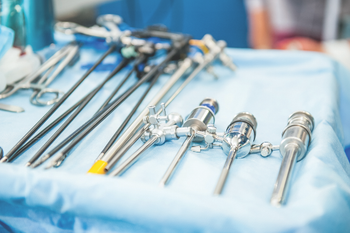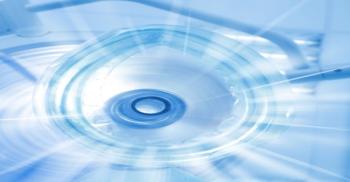
A letter has been sent to more than 4500 veterans stating that reusable instruments used in medical procedures may not have been sterilized properly at a Georgia hospital.

A letter has been sent to more than 4500 veterans stating that reusable instruments used in medical procedures may not have been sterilized properly at a Georgia hospital.

Proper ventilation can greatly reduce the environmental strain on operating rooms. However, there’s no one-size-fits all solution.

The successful combination of products and the adoption and application of science-based practices will help the sterile processing profession rise above challenges to protecting frontline technicians.

“[Personal protective equipment] was splashed during most activities and did not prevent skin exposure even when properly donned and doffed,” the study states.

La’Titia Houston MPH, BSN, RN, CIC: “We work not only with the bedside nurses and the sterile processors, but even with our clinicians, our physicians. They want a timeout before the procedure is even performed because they want to ensure that the scope did pass during the high-level disinfection procedure.”

Testing of the infant of the COVID-19–positive mother requires 2 negative COVID-19 tests 2 days apart. This time delay adds to the challenge of ensuring available isolation beds.

The makeup and application of surgical drapes hasn’t significantly changed in 50 years, a study states. Time for a new look?

Many infection preventionists trust that everyone working in the operating room knows what they are doing and many times shy away from going into the OR. That's a mistake.

Linda Spaulding RN, BC, CIC: “It only takes you saying something a couple times that the OR knows is absolutely absurd and incorrect, and it’s going to ruin the relationship for a long time. Infection preventionists really need to take the responsibility of learning.”

Tanya Lewis, CRCST: “I just think that infection preventionists and sterile processors should always work as a team. It should always be a team effort. It’s not them or us. It’s not sterile processing. It’s not infection prevention, but it’s us as a team. And that’s the way we’re going to keep our patients safe.”

Though tough months lie ahead for infection preventionists and other healthcare professionals, hope remains that at some point in 2021 things will begin to settle down. In the end, it comes down to a simple formula: We win, COVID-19 loses.

Linda K. Groah, MSN, RN, CNOR, NEA-BC, FAAN: “Historically, we have not always had the best relationship. There’s been some competition between infection preventionists and OR managers or directors. The operating room has been that secret area behind the double doors.”

New infection preventionists can use this checklist to perform IP rounds in the surgical suite, decontamination areas, and sterile processing area.

Franklin Dexter, MD: “I would recommend to those people working in different surgical suites to recognize that within an operating room, you shouldn’t assume that stepping away from the patient would put you in reduce risk. You should think about what the airflow is in the operating room.”


Common sense dictates that limiting surgical patients' exposure to any reservoir that could harbor pathogenic organisms could help prevent surgical site infections (SSIs). Wearing proper surgical attire is a cornerstone of SSI prevention, yet there has been strident disagreement on some of the finer points of surgical attire and its impact on SSI rates.

Recent news headlines reported two deaths and 179 exposures from contaminated surgical instruments used for endoscopic retrograde cholangiopancreatography (ERCP) at a university medical center in California.1 Similar infections also occurred in Washington, Illinois, and Pennsylvania.

Despite a large literature on surgical site infection (SSI), the determinants of prevention behaviors in surgery remain poorly studied. Understanding key social and contextual components of surgical staff behaviour may help to design and implement infection control (IC) improvement interventions in surgery.

The Leapfrog Group, an independent national healthcare watchdog organization,?today released Safety In Numbers: The Leapfrog Group’s Report on High-Risk Surgeries Performed at American Hospitals.

While decolonization of Staphylococcus aureus reduces surgical site infection (SSI) rates following hip and knee arthroplasty, its cost-effectiveness is uncertain. Rennert-May, et al. (2019)




